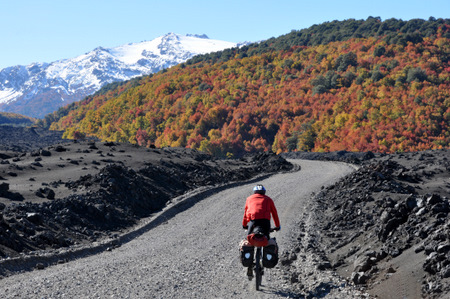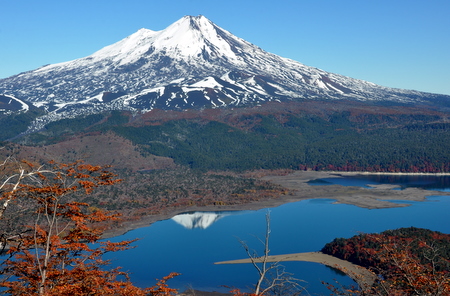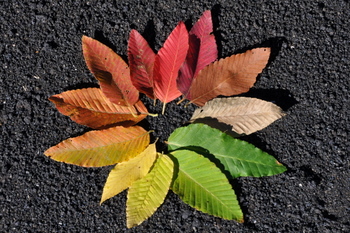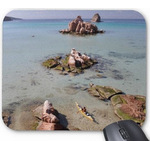• Logbook
• Road Stars
Photo album:
• Conguillio N. P.
Download GPS files for Conguillio NP:
• GPS track & waypoints
In this stage we cross the Conguillio National Park, starting at Melipeuco and ending at Curacautín. The park's star is the Llaima volcano, visible from everywhere, with its more than 9000 feet. In short, this tour includes one day up to the area where the lakes are and a second day to do a hike and go down to Curacautín. The park at this time of the year is wonderful. On the slopes with vegetation there is a mixture of evergreen and deciduous trees that creates a kaleidoscope of colors emphasized by the contrast with the volcanic rock and ash. With the gorgeous sunny days we are having, we keep finding new ways to photograph the Llaima, framed by araucarias, between yellowish or reddish foliage or by itself against the blue sky.
Stage index:
April 30: From Melipeuco to Lake Conguillio (Profile)
May 1: From Lake Conguillio to Curacautín (Hike profile) (Bike profile)
April 30, 2011: From Melipeuco to Lake Conguillio

The climb from Melipeuco to the camping area on Lake Conguillio is not as hard as we expected. The slope of the dirt road is very gradual. However, the main reason for not noticing the climb is the beauty of the landscape that keep us excited at all times.


Upon reaching 3000 feet of elevation we come out of the forest and a swirl of yellow leaves says goodbye to us spiraling wildly. At this height, the araucarias take possession of the landscape and the forest is much more open. We don’t hesitate to shoot these new views of the Llaima.
Finally we arrive to the shores of Lake Conguillio where we can see without interference the Sierra Nevada volcano, although not as slender as its neighbor. When we get to the campsite we sit on the volcanic gravel beach and we sunbathe for a while. We realize this is the first time in our trip that the temperature is pleasant enough to take some clothes off and expose the bare skin to the sun. We stay there until the sun sets behind the mountains. Then we run to set up the tent and start the nightly routine.

May 1 2011: From Lake Conguillio to Curacautín


The Lake Conguillio has the particularity of having been formed as a result of eruptions from the Llaima. The lava flow blocked the previous river and created a natural dam. The lake has no outlet in the form of river, but the water is filtered through the volcanic rock at the bottom, very porous and permeable, facilitating the water to percolate towards the old river bed.

Back to the main road, we retrieve our bikes from the hideout where we left them and we set off to Curacautín, the village where we will sleep today. The road has some snow at the pass but the vehicles that have passed since last week´s storm have left two tracks clean of snow that we gladly use. The forest is too dense to let us see the Llaima. Only when we come to the lava field of the last eruption (January 2008), it comes into view. Here the view is chilling. We just came out from the lush vegetation and suddenly it becomes a desert of jagged rocks and slag impenetrable to all forms of life. However, the landscape is still amazing. This side of the volcano has some lateral cones with distinct red deposits from the black ones we have seen so far.



